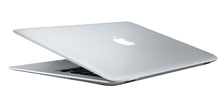How Green is Your PC Machine?

by Michael Phillips
05 Mar, 2008
Website Magazine ran a story on
Dell boasts a four-tiered approach to their environmental actions for their goal of becoming the "greenest technology company on Earth." In October 2007, an ENERGY STAR 4.0-compliant desktop was released, powered by an 80% efficient power supply.




- Energy Efficiency. Dell's Energy Smart program is focused on designing energy-efficient products that reduce power requirements, reducing carbon dioxide emissions. They also purchase portions of their electricity needs from renewable energy resources and are members of the EPA's Smartway program, reducing emissions from shipping and logistics operations.
- Materials Use. Dell seeks to substitute materials used for those considered "substances of concern." This includes substances known to have hazardous properties that are a threat to humans and the environment, show indications of hazardous properties and those know to biopersist and bioaccumulate in humans or the environment. They also are committed to eliminating brominated flame retardants (BFRs) and polyvinyl chloride (PVC) from all of their products by 2009.
- Recovery & Recycling. Dell customers can return their equipment at any time for free recycling. They also provide free recycling of any brand computer or printer with a Dell purchase. There is also a program to donate working used computers to non-profit organizations.
- Plant a Tree for Me. You can choose to plant a tree with every purchase at Dell by choosing the option at checkout. You can also simply make a donation from their website without a Dell purchase.

- Materials Use. Like Dell, HP looks to substitute materials for those known or suspected of being hazardous to humans and the environment, including phasing out BFRs and PVC in both their products and packaging. In 2006 they replaced all solvent-based paints with water-based.
- Operations. HP analyzes the environmental impact of their operations each year. Their HP Workplace Transformation (HPWT) program focuses on "greening up" their buildings to reduce water consumption and energy usage along with using low volatile organic compound paints, coatings, carpets and furniture. Data centers have reduced their energy usage by 21%, potable water use by 50%, and their Dynamic Smart Cooling Technology is anticipated to reduce cooling-related energy consumption by 15% to 40%.
- World Wildlife Fund. HP will allocate more than $2 million in cash and equipment to the World Wildlife Fund to establish three projects that seek to research and help solve climate change. The Epicenter for Climate Conservation is a research center supplied by HP technology focused on advancing climate change science worldwide. Climate Witness is an online forum to raise awareness - projects will be established in the US, China, Brazil and India. ICT (information and communication technologies) will be examined to identify one billion tons of carbon reductions through new technologies.
- Supply Chain Management. HP sets guidelines for their more than 600 direct suppliers. Requirements include compliance with national laws and regulations, signing of HP's Supplier Social and Environmental Responsibility Agreement, and the following of HP's product content environmental specifiications in their General Specification for Environment policy.

- Products and Packaging. Simply put, as Apple's products shrink, so does their packaging and environmental impact. Early iMacs contained some 3.7kg of packaging and 484g of lead, compared with the latest generation with 2.0kg of packaging and 0.6g of lead. Sleep power consumption has dropped from 35W to 2.7W, respectively.
- Energy Efficiency. A reduction of 92% in sleep mode and 73% in off-mode has been achieved since the first generation of the iMac. Mac mini consumes as little as 25W when operating - less than half of a typical light bulb. Power adapters used with laptops have reduced their usage by 82% since 1998. Apple products aim to meet or exceed regulations set by the EPA ENERGY STAR program, the California Energy commission appliance efficiency regulations and the European Union code of Conduct on Efficiency for External Power Supplies.
- Recycling. Recycling seems to be a big focus at Apple. In 2006, Apple recycled 13 million pounds of e-waste - the equivalent of 9.5% of the weight of all products sold seven years earlier (a precendent set by Dell, based on a product's lifetime.) By 2010 they anticipate recycling 19 million pounds per year, or nearly 30% of the product weight sold in 2003. According to their website, Apple has diverted over 21 million pounds of equipment from landfills since 1994. All recycling is done in the US. Apple will take back your iPod (ask about the 10% discount on a new iPod) or any cell phone for recycling, regardless of manufacturer.
- Catching Up. Apple appears to have some catching up to do. They have certainly taken giant leaps in removing toxic chemicals from their products and cutting down on material usage and packaging. A blog about A Greener Apple by Steve Jobs states how they are "beginning to explore the overall carbon 'footprint' of our products, and may have some interesting data and issues to share later this year." That's good news, even if they are a little late coming to the party.

Michael Phillips
Masson specializes in helping brands articulate their purpose and communicate their value—through naming, campaigns, pitch decks, copy, video, and multi-platform, targeted content series.
Subscribe to Our Newsletter!
Latest in Marketing









